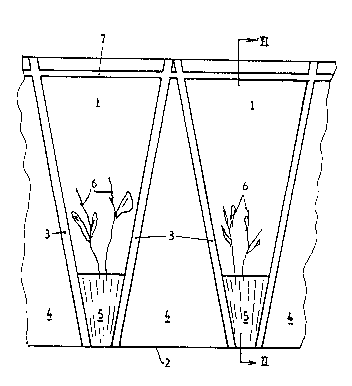Une partie des informations de ce site Web a été fournie par des sources externes. Le gouvernement du Canada n'assume aucune responsabilité concernant la précision, l'actualité ou la fiabilité des informations fournies par les sources externes. Les utilisateurs qui désirent employer cette information devraient consulter directement la source des informations. Le contenu fourni par les sources externes n'est pas assujetti aux exigences sur les langues officielles, la protection des renseignements personnels et l'accessibilité.
L'apparition de différences dans le texte et l'image des Revendications et de l'Abrégé dépend du moment auquel le document est publié. Les textes des Revendications et de l'Abrégé sont affichés :
| (12) Demande de brevet: | (11) CA 2035021 |
|---|---|
| (54) Titre français: | METHODE D'ENRACINEMENT ASEPTIQUE DE PLANTS PRODUITS PAR CULTURE IN VITRO POUR L'HORTICULTURE ET L'AGRICULTURE |
| (54) Titre anglais: | METHOD FOR ASEPTICALLY ROOTING OF IN-VITRO PROPAGATED MATERIAL FOR THE HORTI- AND AGRICULTURE |
| Statut: | Réputée abandonnée et au-delà du délai pour le rétablissement - en attente de la réponse à l’avis de communication rejetée |
| (51) Classification internationale des brevets (CIB): |
|
|---|---|
| (72) Inventeurs : |
|
| (73) Titulaires : |
|
| (71) Demandeurs : |
|
| (74) Agent: | SMART & BIGGAR LP |
| (74) Co-agent: | |
| (45) Délivré: | |
| (86) Date de dépôt PCT: | 1990-06-21 |
| (87) Mise à la disponibilité du public: | 1990-12-22 |
| Licence disponible: | S.O. |
| Cédé au domaine public: | S.O. |
| (25) Langue des documents déposés: | Anglais |
| Traité de coopération en matière de brevets (PCT): | Oui |
|---|---|
| (86) Numéro de la demande PCT: | PCT/NL1990/000088 |
| (87) Numéro de publication internationale PCT: | NL1990000088 |
| (85) Entrée nationale: | 1991-02-20 |
| (30) Données de priorité de la demande: | ||||||
|---|---|---|---|---|---|---|
|
(57) Abstract
A method for aseptically rooting of in-vitro propagated material for the horti- and agriculture, using a rooting medium,
within a c???ed integument formed of a semi-permeable and transluscent membrane. According to the invention the plant to be
rooted is put into a spongy artificial substrate which is impregnated or soaked with the rooting medium in liquid form and is en-
closed within the integument.
Note : Les revendications sont présentées dans la langue officielle dans laquelle elles ont été soumises.
Note : Les descriptions sont présentées dans la langue officielle dans laquelle elles ont été soumises.

2024-08-01 : Dans le cadre de la transition vers les Brevets de nouvelle génération (BNG), la base de données sur les brevets canadiens (BDBC) contient désormais un Historique d'événement plus détaillé, qui reproduit le Journal des événements de notre nouvelle solution interne.
Veuillez noter que les événements débutant par « Inactive : » se réfèrent à des événements qui ne sont plus utilisés dans notre nouvelle solution interne.
Pour une meilleure compréhension de l'état de la demande ou brevet qui figure sur cette page, la rubrique Mise en garde , et les descriptions de Brevet , Historique d'événement , Taxes périodiques et Historique des paiements devraient être consultées.
| Description | Date |
|---|---|
| Inactive : CIB expirée | 2018-01-01 |
| Le délai pour l'annulation est expiré | 1994-12-21 |
| Demande non rétablie avant l'échéance | 1994-12-21 |
| Réputée abandonnée - omission de répondre à un avis sur les taxes pour le maintien en état | 1994-06-21 |
| Inactive : Demande ad hoc documentée | 1994-06-21 |
| Demande publiée (accessible au public) | 1990-12-22 |
| Date d'abandonnement | Raison | Date de rétablissement |
|---|---|---|
| 1994-06-21 |
Les titulaires actuels et antérieures au dossier sont affichés en ordre alphabétique.
| Titulaires actuels au dossier |
|---|
| PERMX B.V. |
| Titulaires antérieures au dossier |
|---|
| JACOBUS J. VAN OEVEREN |